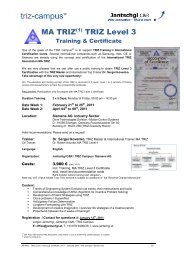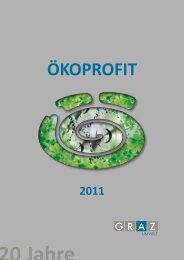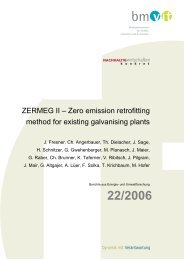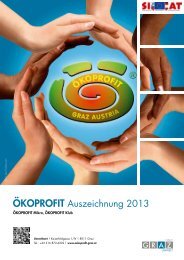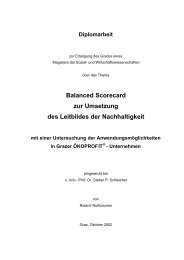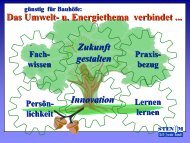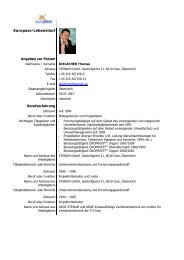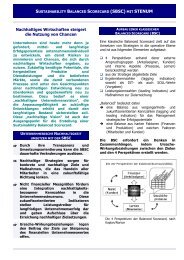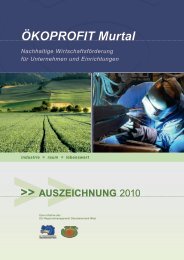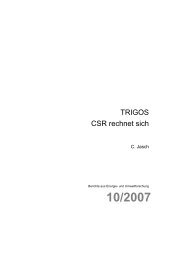Promoting Resource Efficiency in Small & Medium size ... - UNEP
Promoting Resource Efficiency in Small & Medium size ... - UNEP
Promoting Resource Efficiency in Small & Medium size ... - UNEP
You also want an ePaper? Increase the reach of your titles
YUMPU automatically turns print PDFs into web optimized ePapers that Google loves.
Laws, regulations and standards<br />
10.1 REACH 102<br />
REACH is a new European Community Regulation on<br />
chemicals and their safe use (EC 1907/2006). It focuses on<br />
the Registration, Evaluation, Authorisation and Restriction of<br />
Chemical substances. The aim of REACH is to improve the<br />
protection of human health and the environment through the<br />
better and earlier identification of the <strong>in</strong>tr<strong>in</strong>sic properties of<br />
chemical substances.<br />
Manufacturers and importers will be required to gather <strong>in</strong>formation<br />
on the properties of their chemical substances, which will allow<br />
their safe handl<strong>in</strong>g, and to register the <strong>in</strong>formation <strong>in</strong> a central<br />
database run by the European Chemicals Agency (ECHA) <strong>in</strong><br />
Hels<strong>in</strong>ki. The Regulation also calls for the progressive substitution<br />
of the most dangerous chemicals when suitable alternatives have<br />
been identified.<br />
10.2 ROHS<br />
The Directive on the restriction of the use of certa<strong>in</strong> hazardous<br />
substances <strong>in</strong> electrical and electronic equipment 2002/95/EC<br />
commonly referred to as the Restriction of Hazardous Substances<br />
Directive or RoHS, was adopted <strong>in</strong> February 2003 by the European<br />
Union. The RoHS Directive took effect on 1 July 2006. This Directive<br />
restricts the use of six hazardous materials <strong>in</strong> the manufacture of<br />
various types of electronic and electrical equipment:<br />
1. Lead (Pb)<br />
2. Mercury (Hg)<br />
3. Cadmium (Cd)<br />
4. Hexavalent chromium (Cr6+)<br />
5. Polybrom<strong>in</strong>ated biphenyls (PBB)<br />
6. Polybrom<strong>in</strong>ated diphenyl ether (PBDE)<br />
PBB and PBDE are flame-retardants used <strong>in</strong> several plastics.<br />
The maximum permitted concentrations are 0.1% or 1000 ppm (except<br />
for cadmium, which is limited to 0.01% or 100 ppm) by weight.<br />
10.3 WEEE<br />
Electronic waste, e-waste, e-scrap, or the Waste Electrical and<br />
Electronic Equipment (WEEE) Directive describes regulations<br />
concern<strong>in</strong>g waste electrical or electronic devices. The process<strong>in</strong>g<br />
of electronic waste <strong>in</strong> develop<strong>in</strong>g countries causes serious health<br />
and pollution problems because electronic equipment conta<strong>in</strong>s<br />
some very serious contam<strong>in</strong>ants such as lead, cadmium,<br />
beryllium and brom<strong>in</strong>ated flame-retardants.<br />
The Directive requires equipment manufacturers to take f<strong>in</strong>ancial<br />
or physical responsibility for their equipment at the end of its<br />
life. Manufacturers must arrange for the ecological disposal,<br />
reuse or refurbishment of electrical and electronic waste at the<br />
end of its useful life.<br />
102) European Commission - Environment, REACH, undated<br />
103



